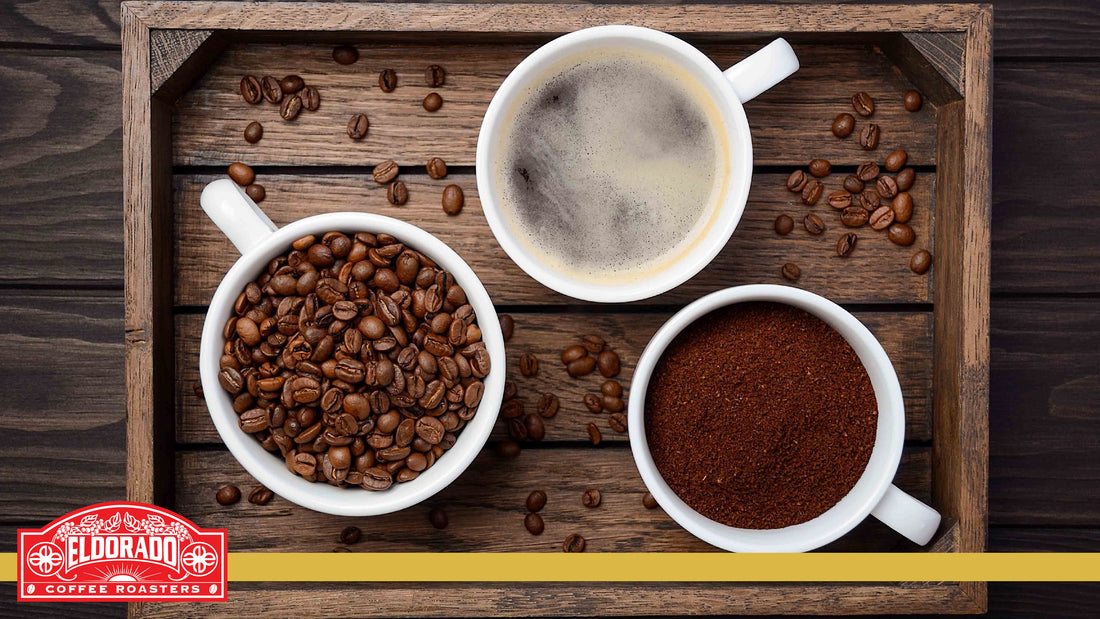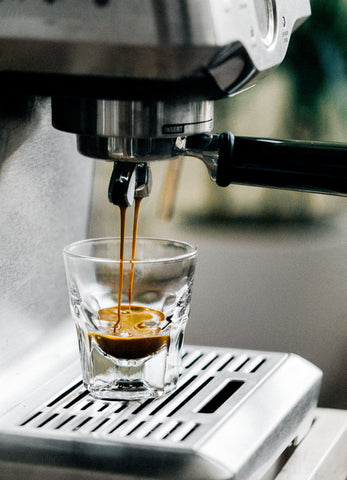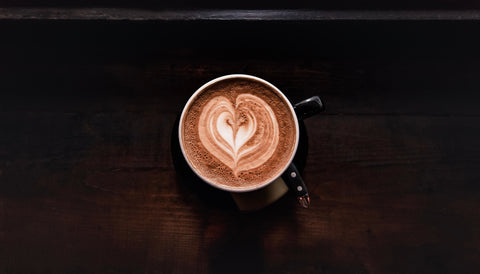
What’s The Difference Between Espresso Beans And Coffee Beans?
Share
You’re wandering the coffee aisle at your grocery store or browsing the Eldorado website, and you see some bags are labeled “espresso.” Contrary to popular belief, that espresso label doesn’t refer to the beans. The difference between espresso and “regular” coffee isn’t actually the bean itself but the way you roast and brew the bean.
What is the difference between espresso and coffee beans?
Are espresso beans and coffee beans the same?
Yup! Most coffee beans are either Robusta or Arabica beans. This holds true for any type of coffee drink you produce—including espresso. The espresso bean is simply a coffee bean that’s roasted more, ground finer, and brewed in an espresso machine or aeropress.

What is espresso?
Espresso is a shot of concentrated coffee, made by forcing very hot water at a high pressure through finely-ground coffee beans. The definition of espresso shows two of the major differences between espresso and coffee: the brewing process and the grind.
Espresso is coffee. It’s just made differently than “regular” American-style coffee.
The differences between espresso and coffee
Roast
Espresso beans are roasted longer and darker than the beans used for drip coffee.
Light, medium, and medium-dark roasts are typically used for drip coffee. That’s what you think of when you think of traditional “American” coffee.
Espresso is roasted for a longer time, usually past the second crack, so it has a toasted and deeper flavor. The beans are also roasted for longer, so it removes a lot of the acidity while releasing more oiliness. This creates a heavier, fuller feeling in the mouth.
Learn more about the different coffee roasts here.
In general, if you see a bag of whole coffee beans that says “espresso” on it, the roaster is stating that they roasted the beans to the dark/espresso roast point.
Grind
An espresso grind is typically much finer than other types of coffee grinds. This is because the process of making espresso requires hot water being pushed through tightly packed grounds. The coffee grounds need to be very fine, like the texture of sand, because the water comes into contact with them for a shorter period of time.
If you see a bag of ground coffee beans that says “espresso,” it usually means that the beans are roasted to the espresso point and they’re ground to a fine espresso grind.
Pro-tip: Espresso grounds are our favorite option for DIY coffee skincare, because it’s fine and less likely to damage skin compared to coarser grinds.
Brewing
For your regular cup of coffee, you can use a French press, drip, percolator, and other methods. Espresso requires a specific type of brewing process, though. This requires either an espresso machine or aeropress, and it results in a shot or two (1-2oz) of a concentrated espresso.
Authentic espresso can’t be made in a regular coffee pot. It needs high pressure for the extraction process to really work its magic.
Espresso takes some skill to make. It also requires the right tools. But that doesn’t mean you can’t learn at home! Once you’ve figured it out, you can have café-worthy espresso every morning, right in your own home. Start learning how to make espresso at home with this article by the Wirecutter.
Taste
Because espresso is roasted, ground, and brewed differently, it has a unique flavor compared to drip coffee. It usually has a bolder, less acidic taste, with a well-rounded and full-bodied finish. It tastes “stronger,” meaning that it has a rich coffee flavor. The roasting process especially brings out more oils in the beans, so it often has a heavier feel.
Does espresso have more caffeine?
It’s actually a myth that espresso has more caffeine than drip coffee. In fact, the opposite is true! The average cup of drip coffee has slightly more caffeine than espresso. That’s because espresso beans are roasted for longer than light or medium roast beans, so a lot of the caffeine is burned away during this process.
Still, espresso has a high concentration of caffeine per ounce. Basically, one shot of espresso (1 ounce) has a similar caffeine content as one cup of drip coffee (8-10 ounces). If you were to drink 8 ounces of espresso, you’d be way overloaded on your daily dose of caffeine though!
What is the difference between espresso and Americano?
An Americano contains espresso. In fact, Caffè Americano (also called a “long black”) is basically just diluted espresso (espresso and water). When diluted, it has a similar strength to drip coffee, but with a smoother and less acidic taste.
An Americano usually has the espresso poured in the mug first, topped with water. A long dark typically puts water in the cup first, topped with espresso.

What is the difference between espresso and cappuccino?
Similarly, a cappuccino has espresso. A cappuccino will typically be a shot or two of espresso mixed with milk (or cream) and topped with steamed milk foam (aka microfoam). Then, it may be topped with cinnamon or cocoa powder for an extra treat.
A cappuccino is made by first pouring one or two shouts of espresso in the bottom of a cappuccino cup. Then, hot milk is poured into the cup to mix together. The top of the drink has milk foam, which can sometimes have drawings like latte art.
Discover the fascinating history of cappuccino here.
Can you use coffee beans for espresso?
Let’s say you’re in a bind. You only have medium roast lying around the house, but you’re dying for an aeropress-made espresso drink. Can you use the medium roast for espresso?
Sure you can! There aren’t any rules when it comes to experimenting with your perfect cup of java. The medium roast won’t taste as strong or reach as the dark or espresso roast, but you can still grind it up super fine to get the right consistency for the espresso brewing method.
While it’s possible, it’s not ideal. We have noticed that a medium roast and a medium coarseness will not produce an espresso. It could taste watered down or weak.
What does the “espresso” label really mean?
Espresso beans are coffee beans. When it says “espresso” on the bag or can, it’s just the roaster’s recommendation of how to use the beans based on the roast and/or grind.
If it’s a whole bean, the espresso beans are likely dark roasted. That means you’ll want to grind it very fine in your home grinder, so you can use it for your espresso. (Learn how to grind coffee beans at home—and why your coffee will taste fresher if you do—here.)
If it’s a ground coffee, the espresso beans are likely dark roasted and already ground very fine, perfect to throw in your espresso machine or aeropress.
The conclusive difference between espresso and coffee
The difference between espresso and coffee is all to do with the way it’s prepared—not the beans themselves. In general, espresso requires a dark roast, fine grind, and high pressure to create an ounce or two (aka a “shot”) of concentrated coffee. When paired with water or milk, you can have a delicious espresso drink that will give you a boost of energy—and delight your taste buds as well!
Browse our fan-favorite espresso whole beans and grounds to start sipping a delightful brew with a strong, bold, rich flavor.
